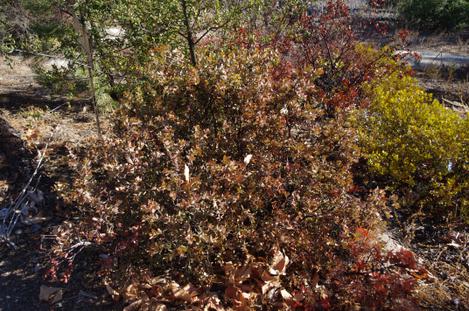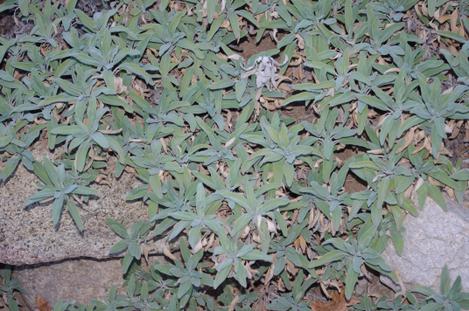Native Gardening in the drought.
Here are some thoughts.
1. This is the worst drought in 200 or so years, just be thankful you're not a bird, bee, hummingbird or other species dependent on green hillsides.
2. If the native plant has been in the ground longer than 3 years and allowed to become drought tolerant you can't just water it. If the plant has been in 2-3 years it is time for it to become drought tolerant, but this is not a 'normal' year. You can water slightly away from the plants so they do not get direct water, you can spritz them every few days, pretending to be a rain shower. If you hit them with a 'deep watering' you will probably kill a goodly percentage as they are in their normal summer phase.
In the 1980's drought I felt bad about the hillsides and put a sprinkler out there in January and gave the chaparral a 'deep' watering. It took that area about 2 years to recover from my 'help'. It looked like I'd burned off half of the roots with one watering, and killed a few of the Trichostema lanatums I'd watered. The plants that were next to the watered area but not in it looked a little better. (We've already made most of the mistakes...)
Watering older native plants once a week for an hour(or so, not 8 minutes or 8 hours) with Mp-rotators or microsprinklers or 1/2 hour with RainBirds seems to be ok. Not perfect, but ok in this drought.
3. Planting new native plants can be very good if: you're replacing non-native plants; you have water available to water once a week through this coming summer; you're infilling your native garden; you're planting something for the wildlife.
4. Planting new plants can be bad if you have no water, your city is not going to allow outdoor watering, you have a hungry bunch of deer. If you do plant new plants you'll need to water once a week, and check, at least the first few waterings, with a shovel to see that you actually watered.
5. The native bees, butterflies and birds have nothing out there, planting some sages, buckwheats, manzanita and Ceanothus might even save a bumblebee or butterfly species from extinction this year.
I'd guess every native flower is going to be mobbed this year.
6. Planting native plants in a city or town is very easy, just check your watering this year,(with the shovel,) you can't get away with what we could in the past as the ground is just too dry.
7. Not all native plants are grown the same, our sun lovers are not grown in shade. If the 'native plant' in the box store looks like lettuce, would you plant lettuce from the grocery in full sun? We can't buy most of the stuff out there in the trade as it dies here in our shade houses. Do not give native plants a bad rap because you bought a 3 foot tall gallon sized plant and it died on the way home. If you were fed wheel barrows full of cocoa puffs, bacon and soda, and kept in a closet your whole life you couldn't walk, never mind run. (Sorry, we keep getting calls and emails from folks that lost the lettuce. Why they don't call the lettuce producers, I have no idea.)
8. It looks like we might have El Nino next year, so it might be a good idea to plant those hillsides this year..
9. In spite of the drought it's really nice in the garden right now.




